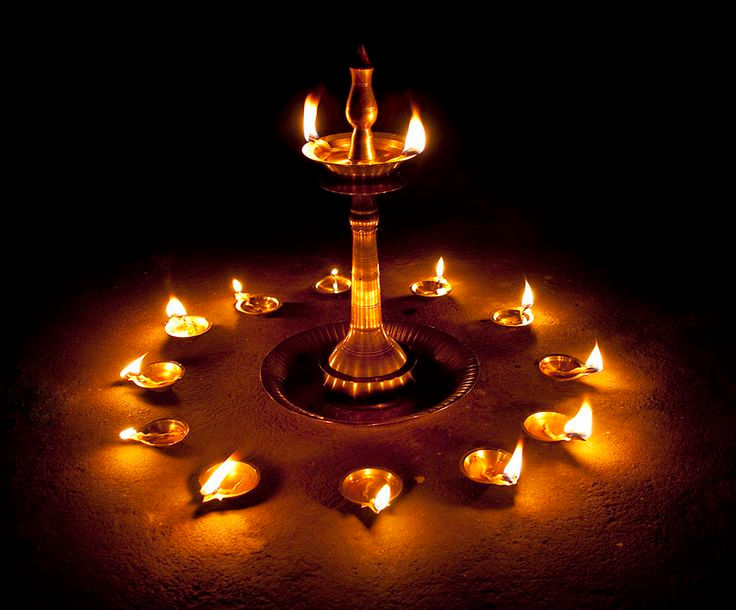Symbolism: Ganesh Chaturthi
- North Bay Hindu Center
- Aug 18, 2020
- 4 min read
Mr S. Subbaraman, a chemist by training, has spent most of his life in the preservation and conservation of India's ancient monuments including famous mural paintings in places like Ajanta, Lepakshi and Thanjavur. This nonagenarian is also a bibliophile. He traces his love of mythology to the many stories he used to hear from his father in his youth.

Lord Ganesha
We celebrate the fourth day of the waxing phase (Shukla Paksha) of the lunar month Bhadrapada as Ganesha Chathurthi, when we worship Lord Ganesha with much devotion and fanfare, in our homes. In Maharashtra and adjacent states, where the influence has percolated, it is a huge public celebration, much like the Durga Puja of Bengal.
In our Pantheon, Lord Ganesha occupies a very high place. We do not start any new venture or perform any religious or social ceremony without first worshipping him, because he is the remover of all obstacles (‘Vighnas‘), hence called Vighneshwara. He is called Ganesha because he is the leader of Shiva’s ganas (followers).
We all know that Ganesha is an Elephant god but do you know how he came to acquire the face of an elephant? It is an interesting story. Ganesha was very much devoted to his mother Parvathi. Once she asked him to guard her door and not allow anyone inside, until she finished taking her bath. Accordingly, Ganesha stood sentinel at the door and soon, his father Lord Shiva himself came to the door and wanted to go inside. Ganesha refused entrance to him since it was his mother’s instructions that no one should be allowed inside. Shiva was enraged. The two fought and Shiva removed Ganesha’s head with his trishula (trident). Parvathi, on coming out and seeing what had happened, grieved for her son and told Shiva that he was only faithfully following her orders. The mollified Shiva then offered to replace Ganesha’s head and bring him back to life. He told his ganas to go on a search, remove the head of the first being they found to be lying down with its head turned towards the northerly direction and bring it. It so happened that the first being they found in such a condition was an elephant and they brought its head. Shiva attached this elephant head to Ganesha and thus revived him. Shiva then blessed him that in the future, he would be the prime deity, whom everyone would worship at the beginning of all enterprises. This may be the reason why our elders ask us even today not to sleep with one’s head turned towards the north. The more plausible scientific explanation to this belief could be because of the possibility of the earth’s magnetic north affecting the brain.
There is another story to illustrate the wisdom and sagacity of Ganesha. It seems the divine couple Shiva - Parvathi once came in possession of a rare type of fruit and they wanted to use it as a means to test their two sons, Ganesha and Karthikeya. They said that whosoever makes a round of the world first would get the fruit. Karthikeya immediately set about his round-the-world trip on his vehicle, the peacock. Ganesha simply went around his parents and said, “You encompass the whole world and by circumambulating you both I have completed the round the world journey.” Seeing Ganesha's wisdom in action, he received the fruit.
Ganesha is fond of Modaka (a rice-coconut-jaggery preparation) and this is what we offer Him particularly on the day of Ganesha Chathurthi. Once on this day, Chandra the Moon God happened to look at Ganesha with his bloated tummy after having had his fill of Modaka. He was amused and could not help laughing at Ganesha, who was angered and heaped a curse on Chandra that, whosoever looks at him (moon) on Ganesha Chathurthi day, will have to face an ‘Apavada‘ (blame for something of which one is not guilty). On Chandra becoming remorseful and praying to Ganesha, he granted him a boon. He said anyone who performs the Sankashtahara Ganesha Chathurthi puja will have any misfortune or difficulties in their life removed. This puja has to be done on the fourth day of the waxing phase (Shukla Paksha) of each month, fasting the whole day and doing puja in the evening, before one can consume food but only after looking at the moon.
When the sage Veda Vyasa wanted to compose the great epic Mahabharata, he was seeking for a scribe who could take down his dictation and decided that no one but Lord Ganesha was competent and up to this task. He therefore prayed to him. Ganesha agreed upon one condition: Vyasa had to go on dictating continuously without any pause. The sage agreed but put forth a condition of his own: Ganesha should not put down anything without first understanding its meaning. He also agreed and thus came to be written the Mahabharata, with a hundred thousand verses, the greatest epic the world has ever seen!
These may all look like fanciful stories, but they convey a lot of meaning and lessons for all of us.
May Sri Ganesha rid this world of all obstacles so we have the proper foundation to blossom in it.




